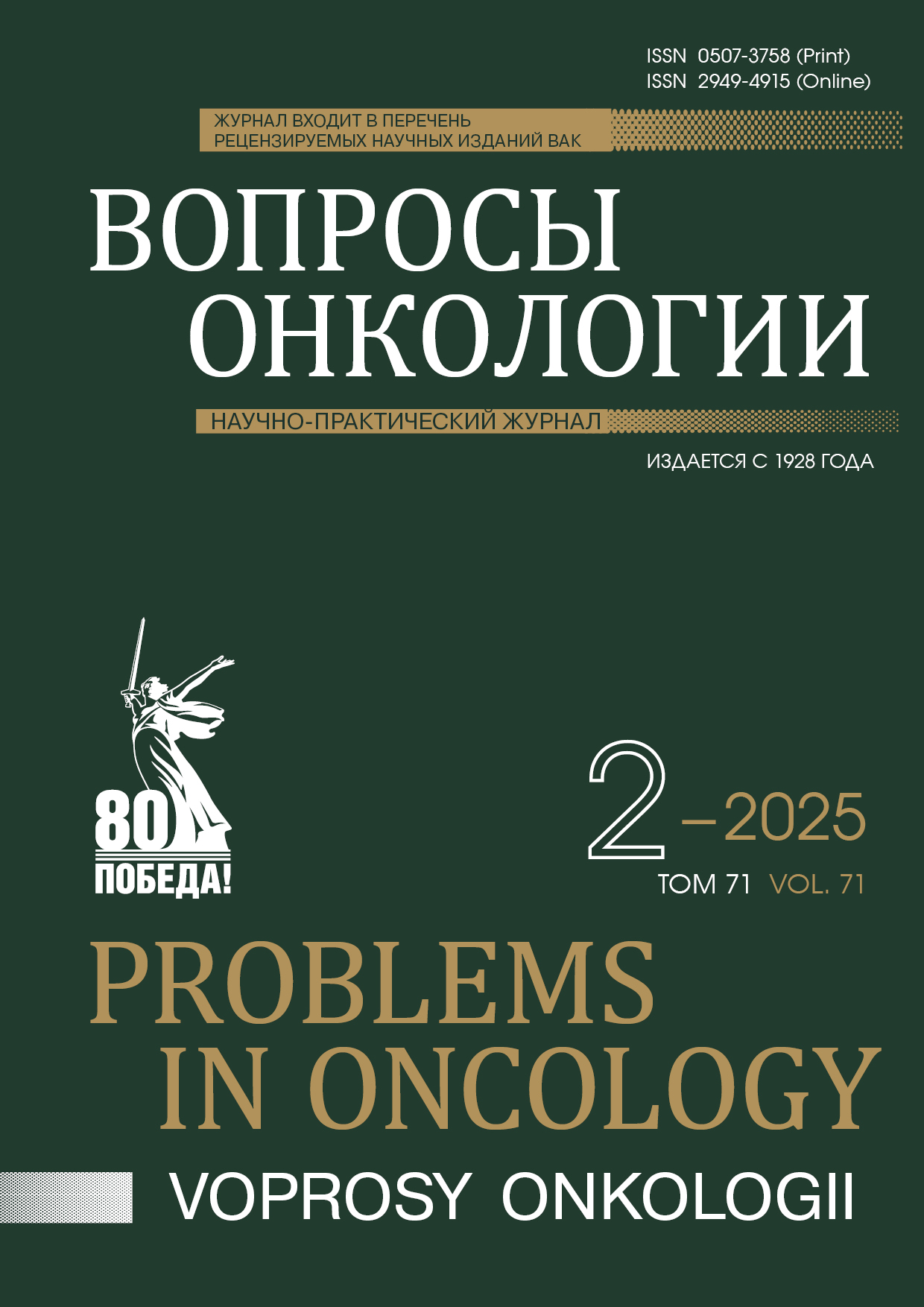Abstract
Introduction. Acute oxaliplatin neuropathy has not received much attention and is considered less clinically significant than the chronic form because most cases are transient and reversible within 48-72 hours. However, there are a number of similarities between acute polyneuropathy caused by various chemotherapeutic drugs and acute cerebrovascular accident, although it should be noted that there are also clear differences that are not always obvious to the clinician.
Case description. The article presents a clinical case of acute neurotoxicity after the first administration of oxaliplatin in 47-year-old women with pancreatic adenocarcinoma. She developed neurological symptoms clinically similar to acute cerebrovascular accident (CVA) four hours after oxaliplatin administration. After exclusion of CVA, we used the Oxaliplatin-Associated Neurotoxicity Questionnaire (OANQ) which showed grade 3 neuropathy. Symptoms resolved rapidly within 48 hours after oxaliplatine discontinuation. The article describes the mechanisms of development and clinical manifestations of neurotoxicity. The clinical picture of the transition from acute to chronic neurotoxicity and the possibility of predicting the development of chronic neuropathy are also described.
Conclusion. We wanted to influence the current practice of oncologists by deepening the understanding of the mechanisms and clinical manifestations of acute oxaliplatin-induced polyneuropathy, improving the diagnosis of acute forms of neuropathy, and facilitating the identification of patients at high risk of chronic CTCAE grade III-IV polyneuropathy.
References
Чубыкина С.В., Татаринова М.Ю., Авакян Г.Г. Нейропатическая боль, вызванная токсическим влиянием химиотерапии, у пациентов со злокачественными новообразованиями. Журнал неврологии и психиатрии им. С.С. Корсакова. 2023; 123(5): 7-12.-EDN: FFYPSD.-DOI: 10.17116/jnevro20231230517.-URL: https://www.mediasphera.ru/issues/zhurnal-nevrologii-i-psikhiatrii-im-s-s-korsakova/2023/5/1199772982023051007. [Chubykina S.V., Tatarinova M.U., Avakyan G.G. Neuropathic pain caused by the toxic effect of chemotherapy in patients with malignant neoplasms. Korsakov Journal of Neurology and Psychiatry = Zh Nevrol Psikhiatr Im S.S.Korsakova. 2023; 123(5): 7-12.-EDN: FFYPSD.-DOI: 10.17116/jnevro20231230517. URL: https://www.mediasphera.ru/issues/zhurnal-nevrologii-i-psikhiatrii-im-s-s-korsakova/2023/5/1199772982023051007 (in Rus)].
Латипова Д.Х., Андреев В.В., Маслова Д.А., et al. Неврологические осложнения Злокачественные опухоли: Практические рекомендации RUSSCO 2023; 13(3s2): 300-309.-DOI: 10.18027/2224-5057-2023-13-3s2-2-300-309.-URL: https://www.rosoncoweb.ru/standarts/RUSSCO/2023/2023-56.pdf. [Latipova D.Ch., Andreev V.V., Maslova D.A., et al. Neurological adverse events. Malignant Tumors. 2023; 13(3s2): 300-309.-DOI: 10.18027/2224-5057-2023-13-3s2-2-300-309.-URL: https://www.rosoncoweb.ru/standarts/RUSSCO/2023/2023-56.pdf (in Rus)].
Velasco R., Bruna J., Briani C., et al. Early predictors of oxaliplatin-induced cumulative neuropathy in colorectal cancer patients. J Neurol Neurosurg Psychiatry. 2014; 85(4): 392-398.-DOI: 10.1136/jnnp-2013-305334.-URL: https://www.ncbi.nlm.nih.gov/pubmed/23813745.
Bruna J., Videla S., Argyriou A.A., et al. Efficacy of a novel sigma-1 receptor antagonist for oxaliplatin-induced neuropathy: a randomized, double-blind, placebo-controlled phase IIa clinical trial. Neurotherapeutics. 2018; 15(1): 178-189.-DOI: 10.1007/s13311-017-0572-5.-URL: https://www.ncbi.nlm.nih.gov/pubmed/28924870.
Green S., Holton A. Drug-induced peripheral neuropathy. Adverse Drug Reaction Bulletin. 2016; 300(1): 1159-1162.-DOI: 10.1097/fad.0000000000000020.-URL: https://journals.lww.com/adversedrugreactbull/fulltext/2016/10000/drug_induced_peripheral_neuropathy.1.aspx.
Kerckhove N., Collin A., Conde S., et al. Long-Term effects, pathophysiological mechanisms, and risk factors of chemotherapy-induced peripheral neuropathies: a comprehensive literature review. Front Pharmacol. 2017; 8: 86.-DOI: 10.3389/fphar.2017.00086.-URL: https://www.ncbi.nlm.nih.gov/pubmed/28286483.
Balayssac D., Ferrier J., Descoeur J., et al. Chemotherapy-induced peripheral neuropathies: from clinical relevance to preclinical evidence. Expert Opin Drug Saf. 2011; 10(3): 407-417.-DOI: 10.1517/14740338.2011.543417.-URL: https://www.ncbi.nlm.nih.gov/pubmed/21210753.
Lucchetta M., Lonardi S., Bergamo F., et al. Incidence of atypical acute nerve hyperexcitability symptoms in oxaliplatin-treated patients with colorectal cancer. Cancer Chemother Pharmacol. 2012; 70(6): 899-902.-DOI: 10.1007/s00280-012-2006-8.-URL: https://www.ncbi.nlm.nih.gov/pubmed/23108696.
Argyriou A.A., Cavaletti G., Briani C., et al. Clinical pattern and associations of oxaliplatin acute neurotoxicity: a prospective study in 170 patients with colorectal cancer. Cancer. 2013; 119(2): 438-444.-DOI: 10.1002/cncr.27732.-URL: https://www.ncbi.nlm.nih.gov/pubmed/22786764.
Pachman D.R., Qin R., Seisler D., et al. Comparison of oxaliplatin and paclitaxel-induced neuropathy (Alliance A151505). Support Care Cancer. 2016; 24(12): 5059-5068.-DOI: 10.1007/s00520-016-3373-1.-URL: https://www.ncbi.nlm.nih.gov/pubmed/27534963.
Attal N., Bouhassira D., Gautron M., et al. Thermal hyperalgesia as a marker of oxaliplatin neurotoxicity: a prospective quantified sensory assessment study. Pain. 2009; 144(3): 245-252.-DOI: 10.1016/j.pain.2009.03.024.-URL: https://www.ncbi.nlm.nih.gov/pubmed/19457614.
Jaggi A.S., Singh N. Mechanisms in cancer-chemotherapeutic drugs-induced peripheral neuropathy. Toxicology. 2012; 291(1-3): 1-9.-DOI: 10.1016/j.tox.2011.10.019.-URL: https://www.ncbi.nlm.nih.gov/pubmed/22079234.
North R.Y., Lazaro T.T., Dougherty P.M. Ectopic spontaneous afferent activity and neuropathic pain. Neurosurgery. 2018; 65 (CN_suppl_1): 49-54.-DOI: 10.1093/neuros/nyy119.-URL: https://www.ncbi.nlm.nih.gov/pubmed/31076785.
Argyriou A.A., Park S.B., Bruna J., Cavaletti G. Voltage-gated sodium channel dysfunction and the search for other satellite channels in relation to acute oxaliplatin-induced peripheral neurotoxicity. J Peripher Nerv Syst. 2019; 24(4): 360-361.-DOI: 10.1111/jns.12354.-URL: https://www.ncbi.nlm.nih.gov/pubmed/31696990.
Teng C.J., Hsieh Y.Y., Chen K.W., et al. Sudden-onset pancytopenia with intracranial hemorrhage after oxaliplatin treatment: a case report and literature review. Jpn J Clin Oncol. 2011; 41(1): 125-129.-DOI: 10.1093/jjco/hyq162.-URL: https://www.ncbi.nlm.nih.gov/pubmed/20826449.
Janjua T.K., Hassan M., Afridi H.K., Zahid N.A. Oxaliplatin-induced posterior reversible encephalopathy syndrome (PRES). BMJ Case Rep. 2017; 2017.-DOI: 10.1136/bcr-2017-221571.-URL: https://www.ncbi.nlm.nih.gov/pubmed/28978604.

This work is licensed under a Creative Commons Attribution-NonCommercial-NoDerivatives 4.0 International License.
© АННМО «Вопросы онкологии», Copyright (c) 2025

